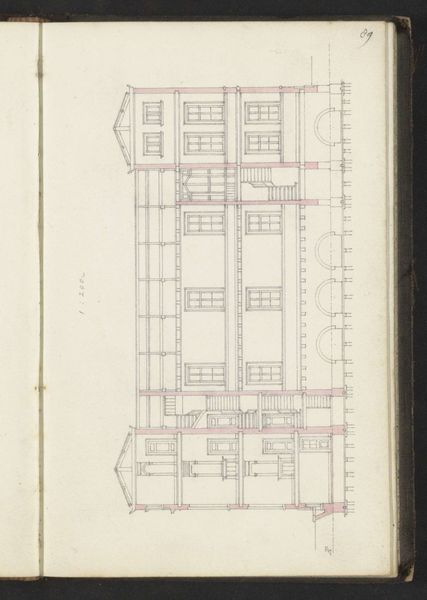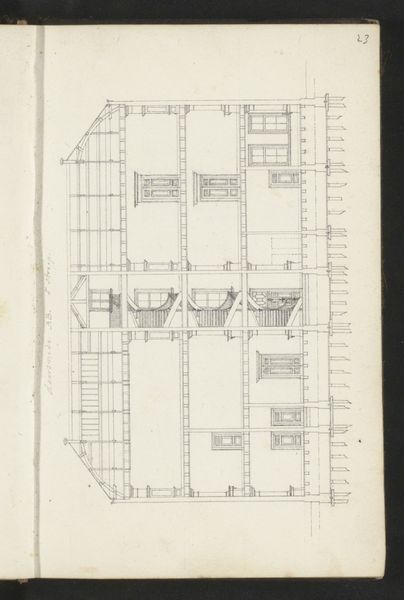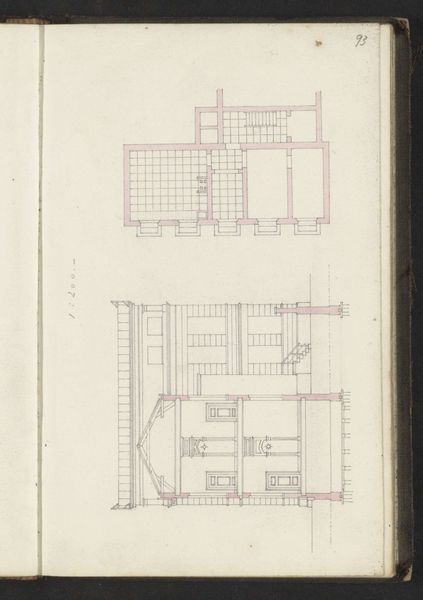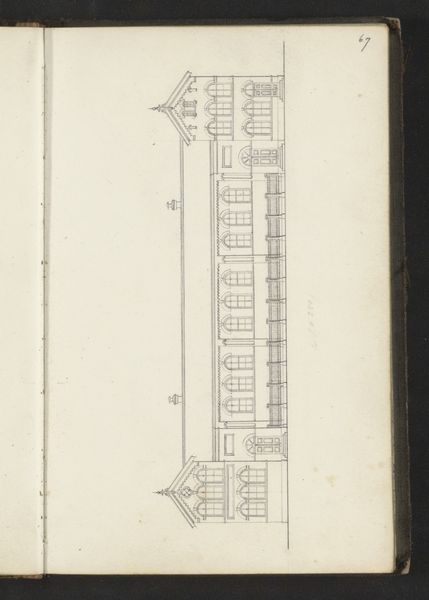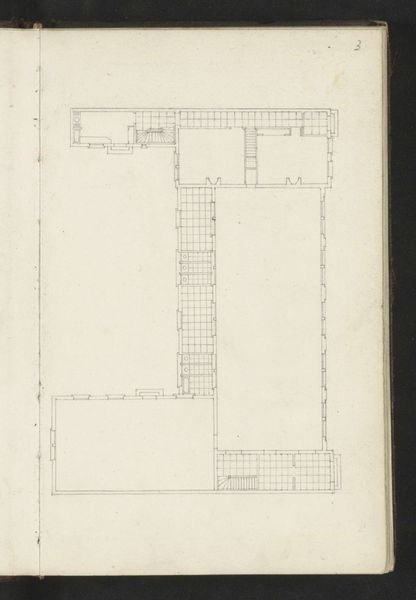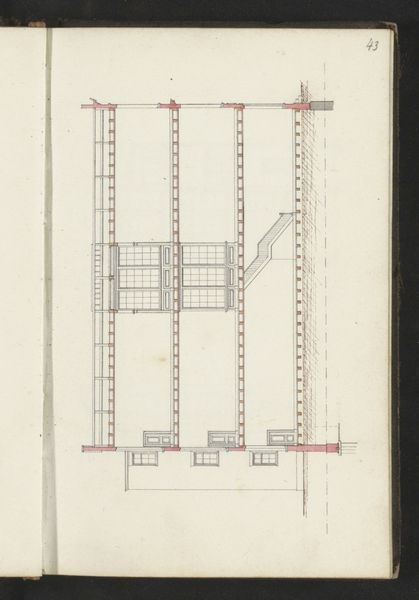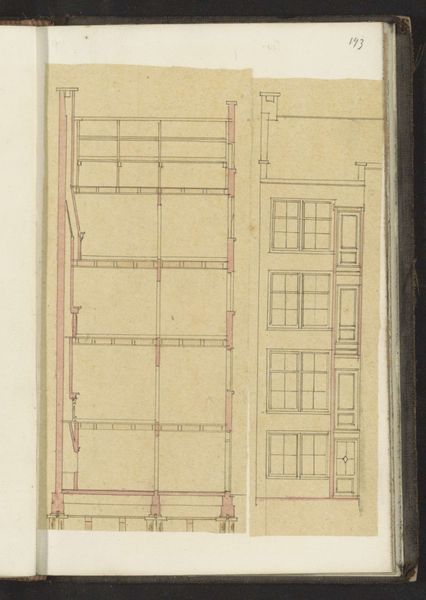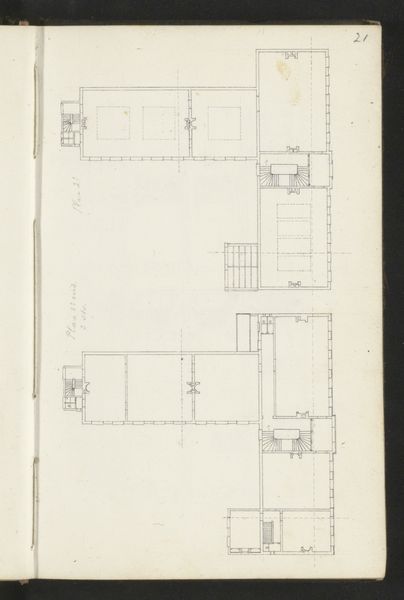
drawing, mixed-media, paper, watercolor, pen, architecture
#
drawing
#
aged paper
#
mixed-media
#
toned paper
#
hand written
#
homemade paper
#
sketch book
#
hand drawn type
#
paper
#
personal sketchbook
#
watercolor
#
hand-written
#
pen
#
sketchbook art
#
watercolor
#
architecture
Copyright: Rijks Museum: Open Domain
Editor: So, this is "Doorsneden van een gebouw in de lengte en breedte," roughly translated as "Sections of a building in length and width," made around 1864 by Willem Springer Jr., with pen, watercolor, and mixed media on paper. I’m struck by how much detail is packed into what seems like a sketchbook drawing. What stands out to you in terms of how it was made? Curator: What intrigues me is precisely that—its creation within a sketchbook context. Notice the materiality: the aged paper, the almost utilitarian application of watercolor. This wasn't conceived as a standalone masterpiece, but as part of a process. It raises questions about labor. Who produced the paper? Who ground the pigments? Springer's role was just the final step in a long chain of production and consumption. Editor: That’s a great point! We often think of the artist in isolation, but this drawing emphasizes a much broader network of makers. The use of red almost looks like highlighting. Curator: Exactly! And consider the social context. Architectural drawings like this were essential for building development, and reflected ideas about urban expansion, class divisions, and material resources. Who was this building for? What kinds of materials were readily available at that time to construct it? The artist has given us clues about the broader building and consuming culture of the time. It's not simply a representation; it's a document of material processes. Editor: So by looking at the drawing materials and techniques, we can learn about more than just the building itself? Curator: Absolutely. The very act of drawing and annotating demonstrates an engagement with materials and how buildings come into being. It reminds us that art is enmeshed within economic, social, and industrial frameworks. What assumptions do we bring when considering ‘art’ vs ‘design’? Editor: I never thought of a sketchbook drawing this way! It makes you wonder about the unseen hands that shaped the artist’s materials and the world they lived in. Curator: Precisely. It opens new avenues to perceive history through artistic output.
Comments
No comments
Be the first to comment and join the conversation on the ultimate creative platform.
